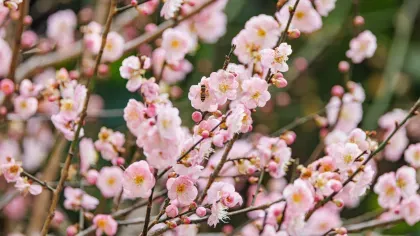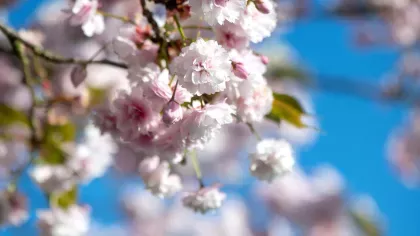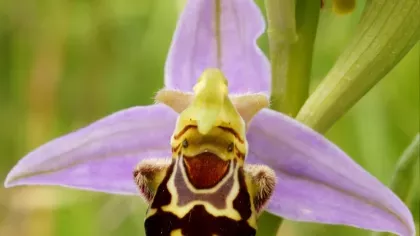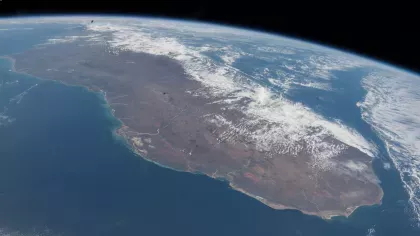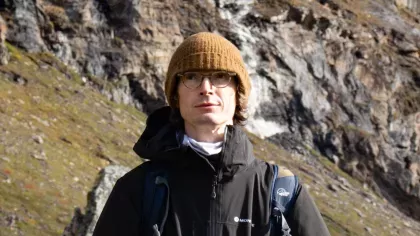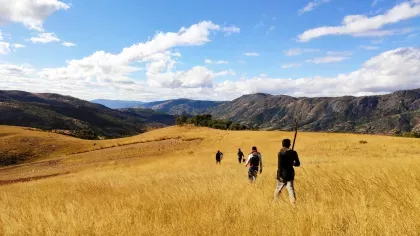Southeast Asia as a cradle of early flowering plant diversification
Sven Buerki, from Kew’s Jodrell Laboratory, discusses the idea that islands located in the region today occupied by South-East Asia played a major role in the early diversification of flowering plants.

Darwin's 'abominable mystery'
Flowering plants (angiosperms) represent one of the greatest terrestrial radiations in recent geological times, with over 250,000 species growing in all types of ecosystems across the globe. Although significant progress has been made in describing this diversity, and inferring evolutionary relationships among the major lineages of angiosperms (APG III, 2009), their origin and rapid rise to dominance remains one of the most enduring unsolved mysteries in evolutionary biology.
Darwin referred to this unsolved question as an 'abominable mystery' in his famous letter to Joseph Hooker. The father of evolutionary theory could not fathom this rapid diversification and rather invoked the idea that 'there was during long ages a small isolated continent in the S. hemisphere, which served as the birthplace of the higher plants'. I became interested in this topic during a Marie Curie postdoctoral fellowship (funded by the European Union) conducted at Kew’s Jodrell Laboratory two years ago. The vast collections and knowledge of plants at Kew provided the optimal environment to brainstorm the key environmental factors that could have triggered the rapid diversification of angiosperms during the Cretaceous.
What I report here is the development of a hypothesis that islands located in the region today occupied by South-East (SE) Asia played a major role in the diversification of angiosperms. This was recently published as a point of view in a special issue of the Botanical Journal of the Linnean Society entitled Ecology and evolution on oceanic islands: broadening the botanical perspective and builds upon my recent studies on the soapberry or litchi family, (Sapindaceae; Buerki et al., 2013), the coffee family (Rubiaceae; Barrabé et al., 2012) and the screw-pines (Pandanaceae; Buerki et al., 2012).
Palaeobotanical evidence
The earliest fossils of angiosperms date back to the Early Cretaceous (136-130 million years ago (hereafter Ma)) and were found in deposits in China, Israel and England (Friis et al., 2011). Interestingly, fossils of more derived groups (e.g. Ranunculales) are globally relatively common almost at the same geological time (ca. 130-112 Ma) (Friis et al., 2011). These findings provide evidence for a major event of spread and diversification in angiosperm history closely following their appearance in the fossil record, in other words over a relatively short period of time. This pattern of rapid global diversification, together with the absence of 'archaic' fossil lineages, makes it difficult to pinpoint the geographic area that may have acted as the cradle of angiosperms. So can we use other lines of evidence to provide further insights?
Evolutionary trees, dating and biogeography
Studies of the evolution of angiosperms have identified a group of early-diverging plants known as the ANA grade (APG III, 2009). Based on analyses of DNA data in which the branches of the evolutionary tree are dated, this ancient group is estimated to have arisen sometime between the Early Cretaceous (130Ma) and the Late Jurassic (160Ma) (see e.g. Magallon & Castillo, 2009; Bell et al., 2010). Five of these seven early plant families are distributed in East and SE Asia, Australia and the Pacific islands.
Similar conclusions also apply to the rest of the early lineages of angiosperms occurring in SE Asia, since most of the islands in this region (mainly the Wallacea region) are the product of the collision between the Australian and Eurasian plates, which started to take place at the Eocene-Oligocene boundary (ca. 33.9 Ma).
The hypothesis of a SE Asian cradle for angiosperms occurred to me while studying the effect of the abrupt climate change at the Eocene-Oligocene boundary and the emergence of islands in SE Asia on flowering plant diversity. One study published last year on the cosmopolitan family Sapindaceae (Buerki et al. 2013) showed that these plants managed to survive the effect of climate change at the Eocene-Oligocene by invading the newly formed islands in SE Asia (that had a more stable tropical climate), but also almost counter-intuitively managed to rapidly increase their speciation rate during this period. A careful examination of the results proved that this increase of speciation was correlated with the dispersals of these plants on the newly emerged islands.
We have been testing this hypothesis on other groups (eg Pandanceae, Rubiaceae) and concluded that modern SE Asia could have had several roles in angiosperm evolution, acting as i) a cradle; ii) a cross-roads enabling dispersals between Northern and Southern Hemispheres (especially during periods of climate change such as the Eocene-Oligocene boundary); iii) a centre of diversification; and iv) a refugium for tropical lineages due to its stable climate (at least in the last 30 Ma). Based on this new evidence, I further investigated the paleogeographical history of this region at the Late Jurassic-Early Cretaceous boundary in the hunt for Darwin’s 'small isolated continent'.
Palaeogeography of SE Asia
The SE Asian region has one of the most compex palaeogeographical histories on the planet. I propose here that the wide range of ecological niches (e.g. contrasting humid and dry climates along latitudinal and longitudinal gradients) in association with the island biogeography features experienced by proto-SE Asia (name given to the islands occupying the region at this period) between the Late Jurassic and Early Cretaceous could have triggered the early diversification of angiosperms.
What the causal factors responsible for this event are remains an open question, but we might hypothesise that due to its geographical position, proto-SE Asia might have provided a prime location facilitating the rapid spread and speciation of angiosperms along the archipelago in a stepping-stone manner, enabling the subsequent colonisation of the remainder of the planet. In addition, these islands might have provided shelter for lineages to survive periods of climatic instability, as for instance at the end of the Cretaceous when the extent of humid environments declined significantly, especially in the Northern Hemisphere (eg fossil evidence showed that the current monocot palaeotropical genus Pandanus occurred in Central Europe during the Cretaceous).
Is the most recent common ancestor of angiosperms lost underwater or underground?
To conclude - could the solution to Darwin’s 'abominable mystery' be that proto-SE Asia served both as the cradle and centre of diversification of early angiosperms? The complex palaeogeographical history of this region, involving the rift of terranes mainly from Gondwanan origin and recent volcanic activities, could explain the lack of fossil evidence for the earliest angiosperms ie they might now be either underwater or lost due to the subduction of terranes/plates. Testing this hypothesis will therefore be something of a challenge!
